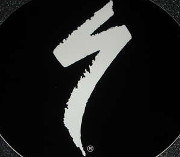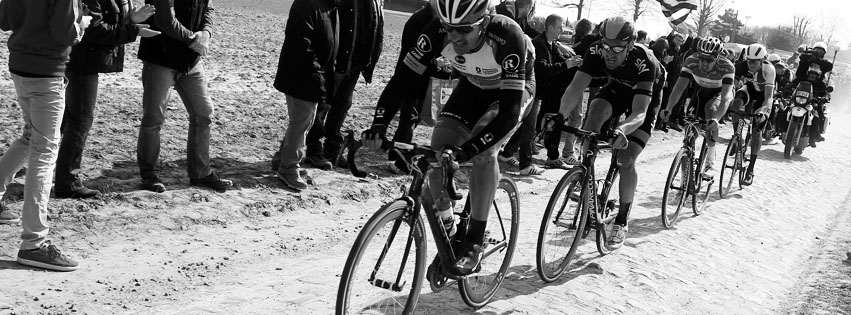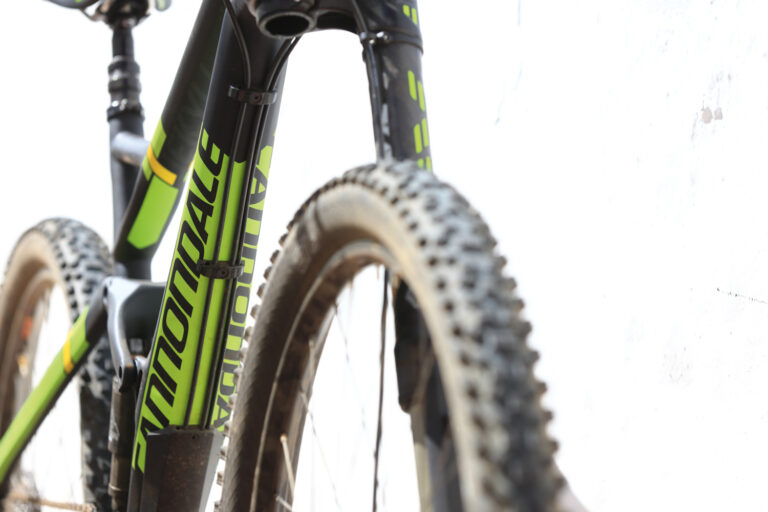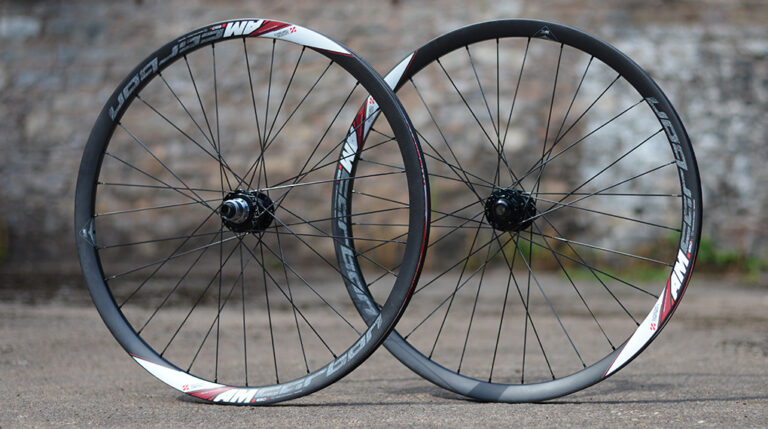 Lets put these bikes into perspective. Whilst we marvel at the superhuman pieces of mountainbiking brilliance by the likes of Hill and Gwin at Val di Sole, Hill and Hart at Champery, or Hill and Hill at Schladming, there remains a trace of resentment to such feats in such difficult places – uncertainties as to the very soul of downhill. That the sport, at world level at least, should in fact be a mix of breathless technicity on one end of the spectrum, matched with aerobic efficiency, on–screen speed for the less informed masses in wide open spaces on the other. Meadow style I think they call it. And that a dirty arm wrestle in a Trentino woodland will get the sport nowhere.
Lets put these bikes into perspective. Whilst we marvel at the superhuman pieces of mountainbiking brilliance by the likes of Hill and Gwin at Val di Sole, Hill and Hart at Champery, or Hill and Hill at Schladming, there remains a trace of resentment to such feats in such difficult places – uncertainties as to the very soul of downhill. That the sport, at world level at least, should in fact be a mix of breathless technicity on one end of the spectrum, matched with aerobic efficiency, on–screen speed for the less informed masses in wide open spaces on the other. Meadow style I think they call it. And that a dirty arm wrestle in a Trentino woodland will get the sport nowhere.
Or so they say. All the downhill aces pile down to a rather haggered San Romolo for a spot of set–up for the season amidst some truly testing terrain, then bugger off to Sea Otter for a race down a field on some long travel wrecking machines. Mad bunch mind, these downhillers.
Most of us don’t have to ride in places we don’t particularly want to go. For many of us it’s all about the areas that can mostly be described as Whistler or the Alps or Backyard. That tight Welsh woodland is a place not so far from the hearts of not just most riders, but the likes of Gee Atherton, Josh Bryceland and Marc Beaumont too. Can’t have done them too bad either, for they’ve each won Val di Sole.
And the relevance to this test? Well it all raises the question, do bikes matter, does racing matter? Yes they do, and of course it does. Find me a pro rider that says they have always been happy with their bike and you’ll find a liar. That the hours spent by suspension and frame designers and mechanics counts for shit? Can Val di Sole be won on a shit bike? No I believe it cannot. Can Bringewood be won on a non–World Cup bike? Yes I believe it can. Can you take a £1500 downhiller off eBay and have fun in the Alps. Yes of course. Can you make a bike that is almost too gnarly? Yes, take a look at the Scott Gambler.
SUSPENSION AND SYSTEMS The Trek wins on system parity – the shock and fork tuned to the design which they drive. The Trek’s fork edges performance in Italy, yet both the Fox forks need babysitting where the Demo’s front damper powers on untouched, supportive. The 40 requires almost twice the cash and four times the maintenance of the BoXXer R2C2 and so would be our choice when picking frame only such as the Wilson whose standard BoXXer World Cup were ditched. Designer Dave Weagle has worked his brilliance on the Wilson, the axle goes back and the bike shoots forward, but why the World Cup/CCDB package come so unstuck in Italy on the faster rockier terrain remains a mystery. Cane Creeks can be brilliant but a total nightmare on track to adjust – and for god’s sake don’t lose your notes. On the whole the middle settings worked well enough on our Double Barrel’s. The Demo out back was nothing special yet so simple to read and governed a by a higher force – the geo. On the whole the V10’ s suspension was good but we’d like a livelier and more balanced dynamic feedback. As a package the Trek wins the damping war…just, but there shouldn’t be spring knocks at 8K folks.
The Trek wins on system parity – the shock and fork tuned to the design which they drive. The Trek’s fork edges performance in Italy, yet both the Fox forks need babysitting where the Demo’s front damper powers on untouched, supportive. The 40 requires almost twice the cash and four times the maintenance of the BoXXer R2C2 and so would be our choice when picking frame only such as the Wilson whose standard BoXXer World Cup were ditched. Designer Dave Weagle has worked his brilliance on the Wilson, the axle goes back and the bike shoots forward, but why the World Cup/CCDB package come so unstuck in Italy on the faster rockier terrain remains a mystery. Cane Creeks can be brilliant but a total nightmare on track to adjust – and for god’s sake don’t lose your notes. On the whole the middle settings worked well enough on our Double Barrel’s. The Demo out back was nothing special yet so simple to read and governed a by a higher force – the geo. On the whole the V10’ s suspension was good but we’d like a livelier and more balanced dynamic feedback. As a package the Trek wins the damping war…just, but there shouldn’t be spring knocks at 8K folks.
At £5099 for a complete build and £2699 for the Wilson frame only it compares well to the frame only £3399 V10, £3500 Demo and £4000 Trek. The Wilson takes some beating in both departments. As a complete package it is almost two whole thousand pounds cheaper than the next cheapest – the Session 9.9 at £7000. A Wilson wins the price war, but I’d be buying it with an R2C2 or BOS up front with Shimano clutch gearing, Avid brakes and a DT wheelset.
SIZE MATTERSMore than anything the test highlighted the glaring disparity in sizing…and lack of. Only the Demo offers a true ‘Large’ sizing, the rest are a tight fit and too small for riders around the 6’ mark. The Devinci carbon comes as the second largest but is not available any bigger than what we had. The XL V10 feels like a good large but the similar size Trek was not available to test. Once we got into hard fast terrain in Italy the small bikes got progressively harder to manage. Fatigue from tired legs that become cramped and prone was common simply due to managing weight transfer within a tight area on the bike. On the XL V10 and Demo you could open up your legs for recovery and yet maintain tempo over rough terrain. A bike that’s too small might feel fast and nervous but overall the stable bike wins the day.
 THE PERFECT TEN
THE PERFECT TEN
No bike gets a perfect ten. Look at some of the component detail on these bikes. Only the Trek and V10 have clutch derailleurs yet both the latter and the Wilson have cranks found on £1500 machinery. The Trek has narrow bars and a non–adjustable stem. The Demo is far from silent. Saint brakes – mechanically brilliant, but boys this is a bike trying to subdue the hill, it’s not a ploughing match.
UK PERSPECTIVEHow the game changed once we arrived back home to spring dirt here in Wales and the Forest of Dean. The mellow arcs through gently sloping conifer woods and soil that loves being ripped suited the lively Devinci and Trek much more than the V10 or Demo. The Wilson charged through the flat root like a bullet, the R2C2 coming into its own with precise wheel placement and consistency of action – just such a shame that when you dived into steeper stuff the small sizing on these bikes slightly undid all the good work.
In the UK the Session along with the Wilson was one of the most vibrant performers by a mile. As for the V10 it was OK, if anything we felt slightly over–biked. The combination of a stiff bar and stem, stiff fork, stiff frame and stiff wheels combined with fierce braking took some of the life out of the Santa Cruz. In many ways the older model/BoXXer spec gave you much more feedback, which is not a bad thing. This bike was in many ways quite different to the other three, built for hard charging by big powerful riders. Many riders simply didn’t get on with it, maybe it needs to rediscover its understanding for a wider variety of rider and place. The Demo? Lacking snap on the flat but managing the high speed G–outs better than any other bikes, it’s one that gets bored with terrain that’s essentially designed for long travel trail. The noise from the rear had not gone away. As for the Wilson, it was a re–awoken beast, light of foot (and as we’ve seen on pocket too), shame it was slightly too small.
TRACK SPECIFICSTesting is very much track–specific. A wild weekend in Mynydd Ddu would certainly offer up even more questions.
CARBONIf anything this test highlighted the less carbon the better. It makes for low and curvy front triangles but is too vulnerable to collisions relative to ali. Unsprung mass matters yes, but so does feeling.
GRAVITY GAMESThe Trek has the most admirers in terms of ride but we need to take the XL into more demanding investigations into dynamic ride. The V10 requires strong arm tactics yet is sensitive to rider movement. In steep violated grounds there are purer breeds. The Devinci, well, it went from chaotically rough to something quite special back at home, but within the Ligurian chaos we became weary. There was only one winner.
In a test that set out to be truly downhill the Specialized Demo dives in head first allowing a split second for the rider to adjust. It gives you belief that whatever is down that bank that somehow you will exit. It asks questions, gets bored in the face of mediocrity, it stretches the boundaries of what a downhill bike should actually be doing.
In a world where we read of rippers and pinners or rowdy loose shredders, in the Demo we have the bike with the right way of thinking. All we need now are the places. I’m not sure it’s the ultimate race bike simply because the ultimate downhill series doesn’t exist. It’s a bike that embraces the true spirit of downhill, a flawed and lairy character that only really opens up at the sight of combat. It was the only one in which I achieved full unity and some kind of order amongst the chaos.
Thanks to: Andy Gowan of One Industries Europe/Maxxis. Roberto Vernassa at Argentina Bike. And Christian, Richard and Ady at Riviera Freeride.
Catch the ‘behind the scenes’ video from our San Romolo test through the link below:
Behind the scenes at the Dirt Magazine carbon downhill bike test in San Romolo, Italy.







